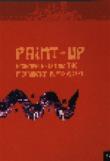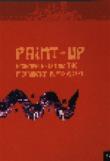AustLit
Latest Issues
AbstractHistoryArchive Description
Shovel-nose sharks, dingoes, the morning star and rainbows feature in 'paint-up'; the age-old practice of decorating the bodies of dancers for the corroboree. Amanda Ahern became fascinated with the distinctive body-art designs while working on Mornington Island. With a background in anthropology and visual arts, she approached the local Elders to involve the community in documenting for posterity the dancers' body-paint designs and their meaning. The result is this first-ever publication to describe in drawings, photographs and stories the unique geography of the Top End and the rich traditions and legends of the Muyinda ancestors. The practice of 'paint-up' is an expression of culture rather than art. Each body-paint design is of profound cultural significance, identifying the wearer with country, sacred sites and ancestral groups. This book is a proud document and a timely gift from the Mornington Island Elders, to be shared by everyone. (Backcover)
Notes
-
Dedication:
To Nelson Gavenor and Andrew Marmies, Muyinda directors and dear friends who tragically disappeared in a plane crash on 24 November 1999 and so will not see this book to completion. Their stories and heritage live on in these pages.
Contents
-
The First People of Mornington Island,
single work
oral history
(p. 29-30)
A story of how the first people came to Mornington Island.
- Thuwathu - The Rainbow Serpent, single work oral history (p. 32)
-
Kakawuny : Boney-Winged Seagull,
single work
oral history
(p. 36)
A story of Kakawuny, the boney-winged seagull of Forsyth Island in the Gulf of Carpentaria.
-
Ngarembee : The Dingo,
Nelson Gavenor
,
single work
oral history
(p. 38)
This is a variation of the dingo dreaming story.
- Gidegal Bana Thuwathu : Moon and Rainbow Serpent, Ngarijan , single work oral history (p. 41-43)
-
Wurruku : The Shark,
Kenneth Jacob
,
single work
oral history
(p. 46)
The story of why the Shark people always the first to lead the young men into ceremony.
-
Wulma : Hammerhead Shark,
Horace Job
,
Billy Kooraububba
,
single work
oral history
(p. 48)
The story that was brought from the Northern Territory to Mornington Island. It is the story of how the shark brought the cycad plams on this shoulders to Gulf of Carpentaria area.
-
Thambe : The Shovel-Nose Shark,
Sidney Wilson
,
single work
oral history
(p. 50)
This story relates to the Gunbar country on the south-east side of Mornington Island. It is the story of lightning man, redbill woman, yellow trevally man and shovel-nose shark.
-
Lamenburren : Tiger Shark,
Andrew Marmies
,
single work
oral history
(p. 52)
This totem story is a 'kutjika' (sacred song) and tells of the journey of the tiger shark.
-
Balibal : Spotted Stingray,
Kenneth Jacob
,
single work
oral history
(p. 54-56)
This story is about Balibal, the black diamond spotted stingray.
-
Milmajah : Barramundi,
Melville Escott
,
single work
oral history
(p. 59-61)
This is the story of the Barramundi clan.
-
Gunjin : The Wallaby,
Reggie Robinson
,
single work
oral history
(p. 62)
This story relates to the wallaby clan from Sydney Island, Gulf of Carpentaria.
-
Jakiriljarr : The Sea Hawk,
Paul Peters
,
single work
oral history
(p. 65)This is the story about the sea hawk who is the boss of Birri.
-
The Two Fat Boys,
Reggie Robinson
,
Andrew Marmies
,
single work
oral history
(p. 68-69)This story from Doomadgee is abour two fat boys, one was left-handed, the other right-handed.
-
Kamba : Rock Cod,
Reggie Robinson
,
single work
oral history
(p. 70)This is the story of the rock cod.
-
Kurruuduwa : Little Red-Legged Devils,
Reggie Robinson
,
single work
oral history
(p. 73-75)
This story relates to several small islands in the Gulf of Carpentaria.
-
Gurrbudjee : Brown Hawk,
Reggie Robinson
,
single work
oral history
(p. 76)This is the story of Reggie Robinson's father and grandfather and their totem, the Brown Hawk.
-
Burrtunantha : Brolga,
Reggie Robinson
,
single work
oral history
(p. 82-83)This story relates to the skin totem of the Balaringi people.
-
Dunkumudin : Sleepy Old Turtle,
Rowan Moon
,
single work
oral history
(p. 84)This is the story of how Rowan Moon got his name Dunkumudin (Sleepy Old Turtle).
-
Dibirdi : The Rock Cod,
Joseph Watt
,
single work
oral history
(p. 86)This story tells of Dibirdi a small rock cod that lives in the rivers at the top end of Mornington Island.
Publication Details of Only Known VersionEarliest 2 Known Versions of
- Mornington Island, Gulf of Carpentaria area, Far North Queensland, Queensland,
- Gulf of Carpentaria area, Far North Queensland, Queensland,





